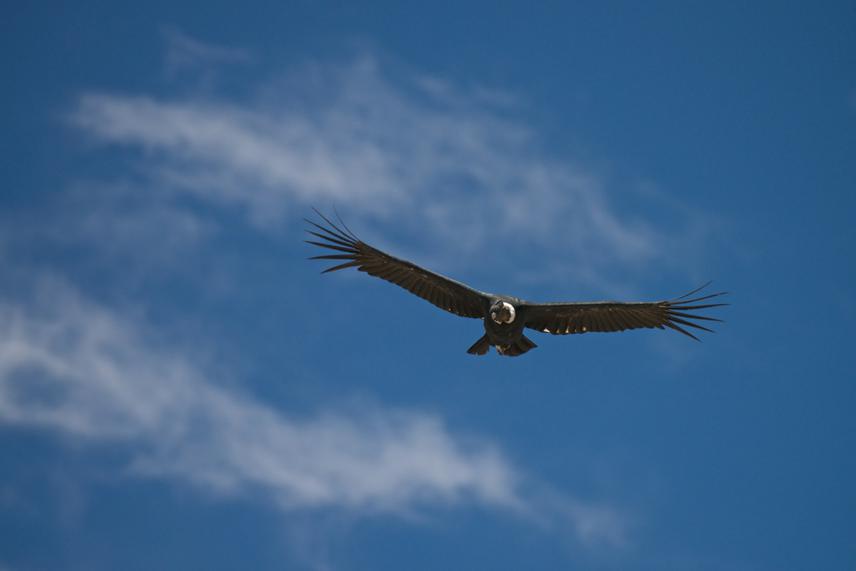Paula Leticia Perrig
Other projects
25 Oct 2023
Effect of a Disease Outbreak on the Conservation of the Threatened Andean Condor
My project aims to show the relevancy of carrion resources resulting from interacting predator and prey populations for the persistence of the threatened Andean condor in South America.

Andean condor flying at San Guillermo National Park.
Vultures are one of the most threatened groups globally, and dietary toxins is the main cause of their decline. The functional extirpation of native prey and apex predators that provided carrion resources forces vultures to depend on the carcasses of livestock or game animals that harbour novel risks. For example, populations of Andean condors, the largest avian scavengers, are declining range wide as a consequence of poisoning by toxin-laced carcasses and lead intoxication from ingestion of bullet fragments in hunted animals. Policies recognizing the importance of reliable and safe food sources are paramount for condor conservation, but missing across their distribution.
This project aims to show that interacting populations of pumas Puma concolor and their native camelid prey, vicuñas Vicugna vicugna and guanacos Lama guanicoe, offer a consistent and safe carrion source that is key to the long-term persistence of condors along the dry Andes. With that goal, we will:
(1) GPS track Andean condors concurrently with pumas and vicuñas,
(2) investigate Andean condor foraging behavior at puma kill-sites and experimental feeding stations,
(3) build local awareness on the conservation of the condor-puma-camelid module.
The main outcome of our work will be the design of a reserve network that provides Andean condors with safe carrion resources through native predatory processes. By doing so, we hope to help protecting condors, pumas and camelids simultaneously across South America.